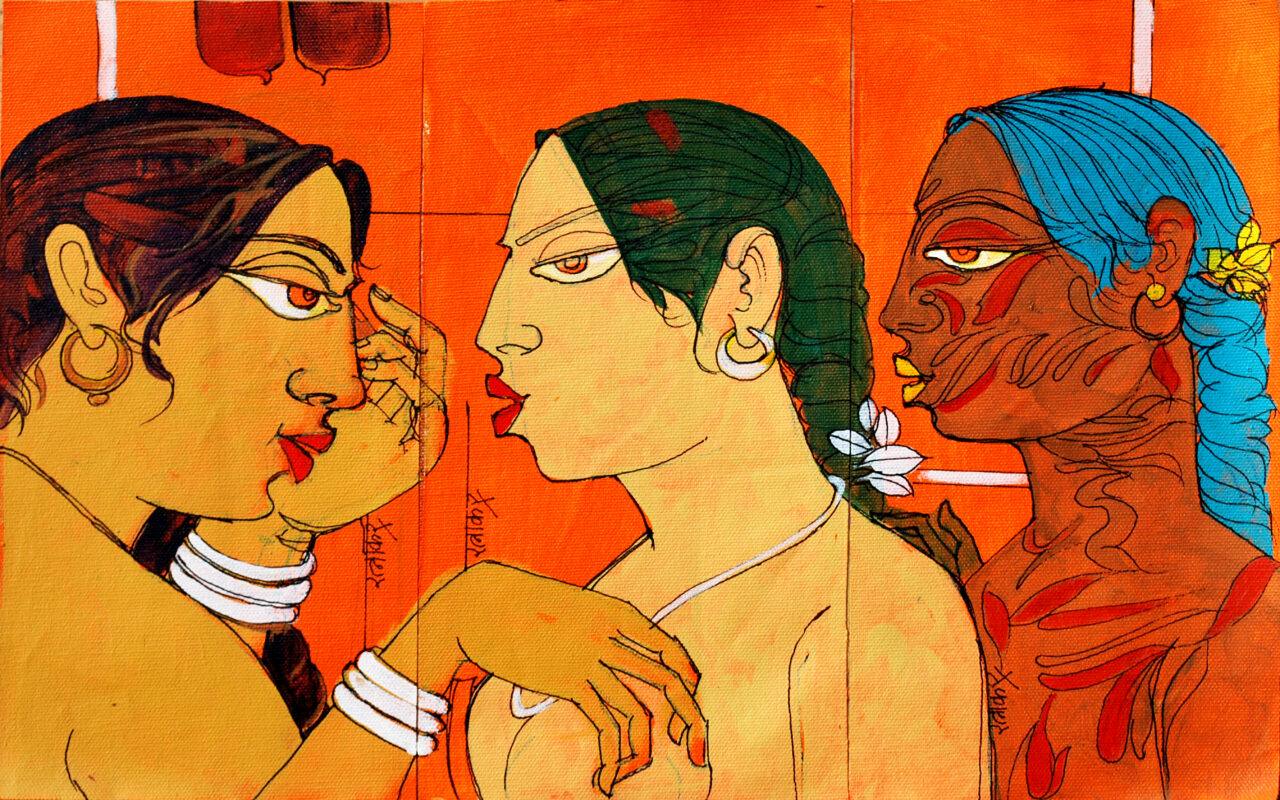The Colours Of Love: Art That Speaks To The Heart
The art scene in Delhi is experiencing a remarkable surge in interest, with an increasing number of galleries and visitors indicating a growing societal appreciation for art. These galleries serve as vital platforms where artists, critics, and the public can engage and share their perspectives. A notable upcoming exhibition is that of Dr. Lal Ratnakar’s paintings at AIFACS, running from November 15th to 21st, which promises to offer a unique experience distinct from other galleries.
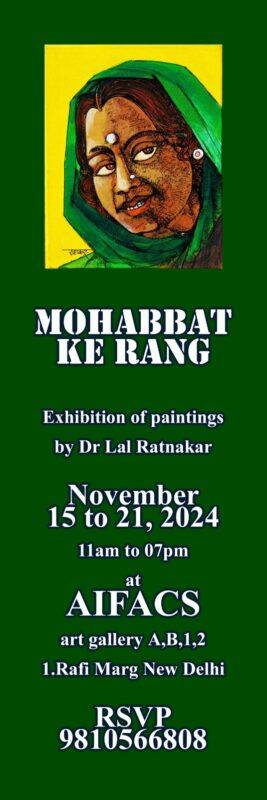
Dr. Ratnakar was born on 12th August 1957 in Bishunpur village in Jaunpur district of the state of Uttar Pradesh. His father, Dr. Ramapati Yadav, was a doctor as well as a famer. His mother, Smt. Ramrati Yadav, was a very hard-working person, and this had tremendous influence on Dr. Ratnakar in his later life.

He earned his bachelor’s degree in arts from Gorakhpur University, completed his master’s degree at Kanpur University, and received his Ph.D. on ‘Folk Art of Eastern Uttar Pradesh’ under the supervision of Professor Anand Krishna at Banaras Hindu University, Varanasi. He was also the Associate Professor and Chairman, Painting Department, M.M.H. College Ghaziabad (affiliated to Chaudhary Charan Singh University, Meerut), now retired. He is also an active member of the Bahumukhi Kalakaar Sangam.
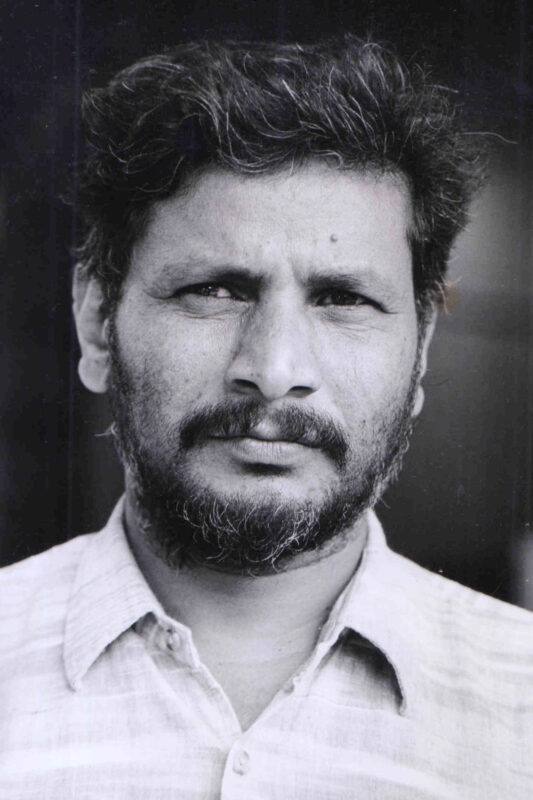
Painting, as a medium, holds a profound ability to convey emotions and messages through visual representation, often more effectively than words. It captures fleeting moments and encapsulates the essence of life, making the artist’s role crucial in interpreting the fast-paced world around us. Art, defined as a blend of imagination and creativity, has historically been a powerful form of expression, with paintings serving as a conduit for the artist’s emotions and societal commentary.
Dr. Ratnakar’s work stands out as it transcends personal pleasure, focusing instead on social themes. His paintings reflect the realities of rural life and the oppression stemming from social inequality, steering clear of idealised beauty. Through his art, he aims to provoke thought about the societal structures that govern life in India, echoing the belief that true beauty lies in a just and equitable social system. His depictions of rural scenes and the struggles of ordinary people resonate with the idea that the soul of India resides in its villages, challenging the notion that modern civilisations can thrive without acknowledging their roots.
The essence of Ratnakar’s artistry lies in his ability to communicate complex emotions and societal critiques through his use of lines, colours, and symbols. His work is not merely aesthetic; it serves as a call for social change, urging viewers to confront the inequalities that persist in Indian society. By highlighting these issues, Ratnakar fulfils his social responsibility, aiming to inspire a new consciousness among his followers.
In evaluating Ratnakar’s paintings, one must consider the historical context of Indian art, which has often overlooked the social realities of its time. While ancient Indian craftsmanship flourished, contemporary artists have frequently shied away from addressing the pressing issues of their society, opting instead for depictions of beauty and urban life. Ratnakar, however, challenges this trend, using his art to shed light on the caste system and social disparities that hinder India’s progress.
His inaugural solo show took place in 1996 at the Ravindra Bhavan Art Gallery 7-8 of the Lalit Kala Academy, with watercolours, oil paints, acrylics, and drawings. Subsequently, the series of workshops and exhibitions persisted in Delhi in 1998 at Lalit Kala Academy, Jahangir Art Gallery in Mumbai, Birla Academy of Art and Culture in Kolkata, State Art Gallery, and CCMB in Hyderabad, followed by events in Bangalore. He initiated the National Series of Art Festival in Ghaziabad in 2004. In 2007, he established ‘Kala Dham’.
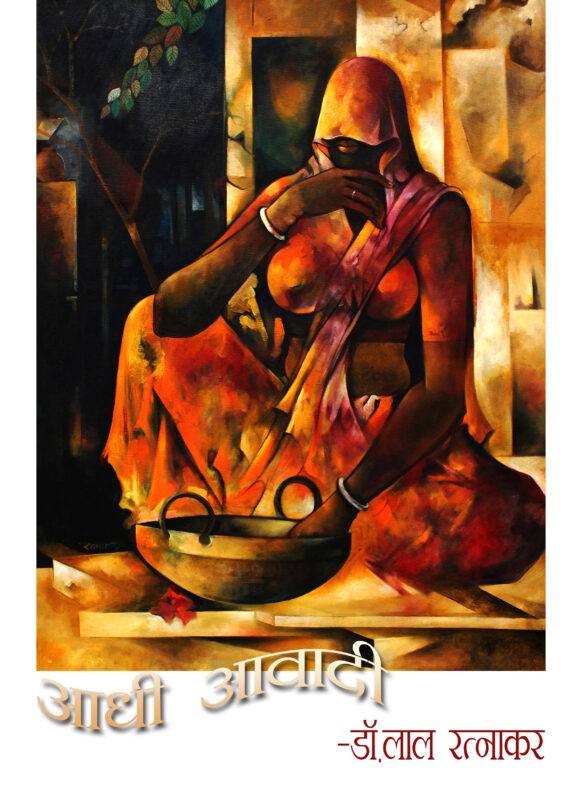
What is referred to as half the population constitutes the entirety of Dr. Lal Ratnakar’s artistic realm. This segment of the society has been safeguarding cultural issues and transmitting them across generations for ages while fostering ideals. With what composure it conceals its suffering and with what deftness it masks its anguish. The traits of ladies are distinctly evident in Lal Ratnakar’s paintings. His characters predominantly originate from rural regions.
Lal Ratnakar’s artworks vividly illustrate how it retains its anguish with composure and conceals its suffering effortlessly. His characters are predominantly derived from rural settings. Despite his limited portrayal of males, whenever they emerge from his brush, the entirety of Indian rural splendour is shown.
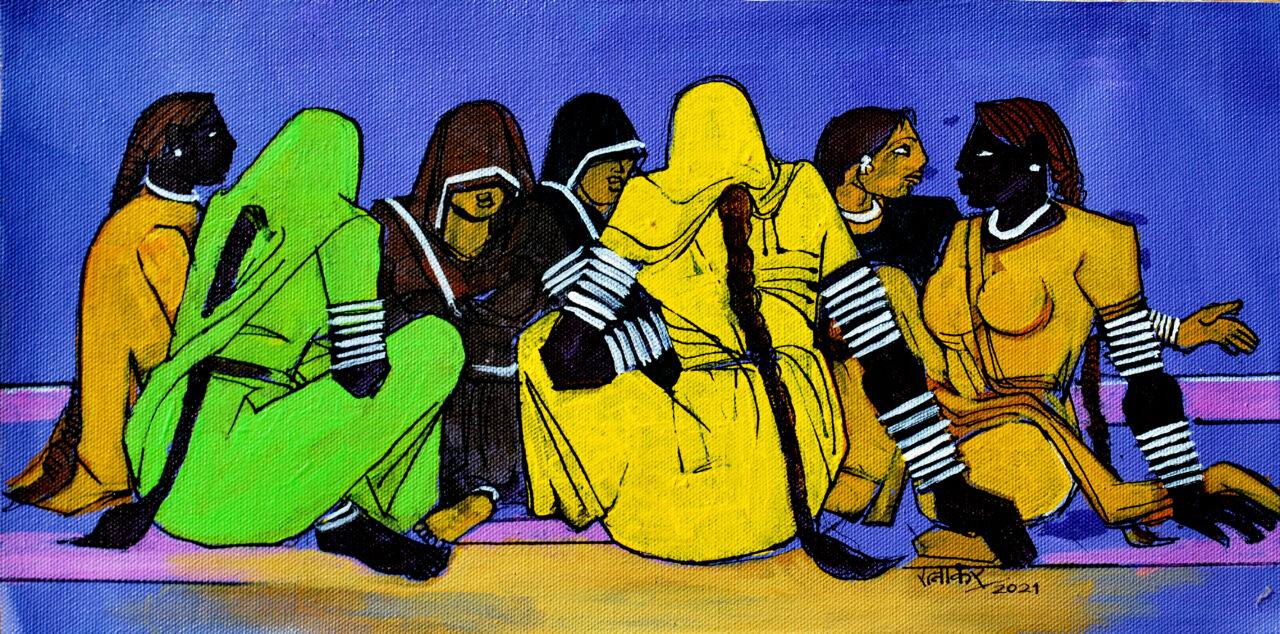
His characters are representative of the working class. Dr. Ratnakar showcases their garments, adornments, and utilised items with artistic finesse. He creates realistic representations of parrots, bulls, and horses in various hues. Mills, sticks, pitchers, wheels, ploughs, and similar objects occupy a prominent position in his works. His colours are vibrant, imparting a celebratory luminescence that captivates the spectator. In this context, he states, “The woman associated with my art is fundamentally aware of colours. She possesses a profound affection for the primary colours that she consistently selects. The fundamental colours established in her roots are red, yellow, and blue; with significant advancement, she may incorporate green, purple, and orange. Additionally, the hues present in her life communicate distinct messages. The primary hues in this context are black and white, each possessing distinct traditional connotations”.
Ultimately, Dr. Lal Ratnakar’s work serves as a poignant reminder of the artist’s role as a social reformer. His paintings not only reflect the struggles of the marginalised but also carry the potential to inspire change and foster a deeper understanding of the social fabric of India. Through his art, he seeks to ignite a new awareness that could lead to a more equitable society, making his contributions invaluable in the ongoing discourse about art and social responsibility.
